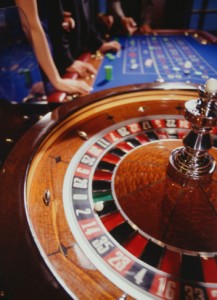“Look and you will find it – what is unsought will go undetected”.
“Finding” your purpose is a misleading concept because it’s not something you have to go out and “get,” but rather something you need to turn within and claim. You’ve already got it – even if you haven’t consciously realized or chosen it yet. Of course, whether you believe it is already within you or not, you still need to “find” it in some sense. How do you do that? By looking in the most obvious places – your passions and interests.
Your purpose will always be something that:
Your purpose will always be something that:
• You feel passionate about
• You are naturally good at
• You already love to do
• Is important to you
Remember earlier I mentioned that your fears about your life purpose being unpleasant are groundless? It’s absolutely true. Why would you be given a life purpose that doesn’t match the essence of who you are?
Would the universe expect a musical prodigy to spend his life crunching numbers in an accounting firm? Would the universe expect you to wait tables when your true passion is childhood education? How would these situations serve anyone? They wouldn’t!
Your life purpose will ALWAYS utilize your greatest passions, talents and interests. No exceptions. Does that inspire a little sigh of relief for you? It should.
“Great minds have purposes, little minds have wishes”.
Irving, Washington
Irving, Washington
Identifying Your Passions
Before you can discover your true life purpose, you need to uncover the clues that lead to it. Namely, things you are good at, feel passionate about, love to do, and are important to you.
Exercise:
Take a piece of paper and a pencil and write a list on a few ideas for each of the following categories (listed below). You’ll be looking for the most obvious answers here – even if there are only a handful of them in each category. Focus on things that have been a major part of your life or occupied your thoughts a lot – and it’s okay to have the same answers on multiple sheets.
Categories:
1. Topics or Subjects I’m Passionate About
These would be topics or subjects you feel passionate about, like personal growth, education, arts and crafts, music, pets, spiritual development, business, charity, arts, poetry etc. Anything you think about and enjoy quite often
2. Activities I Love To Do
These would be tangible activities like sports, working out, painting, singing, writing, reading, cooking and so on.
3. Things I Am Naturally Good At
On this sheet, list all of your best talents, skills and experience. Focus on actual activities that you do easily and well, either because you’re naturally good at them or because you have a lot of training/experience with them.
4. Things That Are Important to Me
World events, situations, groups, causes, people, animals and more that are important to you. Focus on things that impact the world in general, not just things that pertain to your own life, your own family, etc.
Putting the Pieces Together
Now that you’ve identified some of your strongest passions and interests, look again at the worksheets. Do you see any connections or patterns between the items you listed? You may not yet have a full picture but more like a handful of puzzle pieces – you see that they could fit together but you’re not sure how.
Here’s a good way to make the big picture clearer:
Imagine that you are preparing to take a journey. What do you need? First, you need to establish a clear destination. You need a map that shows you how to get to your destination. You need a method of transportation to travel there; and of course, all modes of transportation require fuel to power them.
Your life purpose is very much like a journey.
• The things you love to do are the vehicle you travel in.
• Your natural talents are the map that shows you how to get to your destination.
• The things that are important to you ARE the destination.
• Your passion is the FUEL that powers the whole operation.
With every purpose, you need:
1) A passion for it. (Your passions)
2) A commitment to it. (Important to you)
3) A tangible way to share it with the world. (Activities you love to do)
4) The ability to do it well. (Your natural talents)
When these things come together, you’ve got a virtual explosion of passion, meaning, fulfillment, empowerment – and purpose!
Do you see now why it’s important to get clear on the four lists categories? Every item you write on those lists offers a possibility and each of those possibilities contain still more possibilities!
Of course, you won’t be following all of them right away, but more likely choosing one to start with. You can always incorporate others later if you want to. For now, I strongly encourage you to start with the ONE that speaks most powerfully to you, the one that makes you feel excited and joyful.
“You are what your deep driving desire is; As your deep driving desire is, so is your will;
As your will is so is your deed; As your deed is so is your destiny”.
The Upanishads
As your will is so is your deed; As your deed is so is your destiny”.
The Upanishads

















